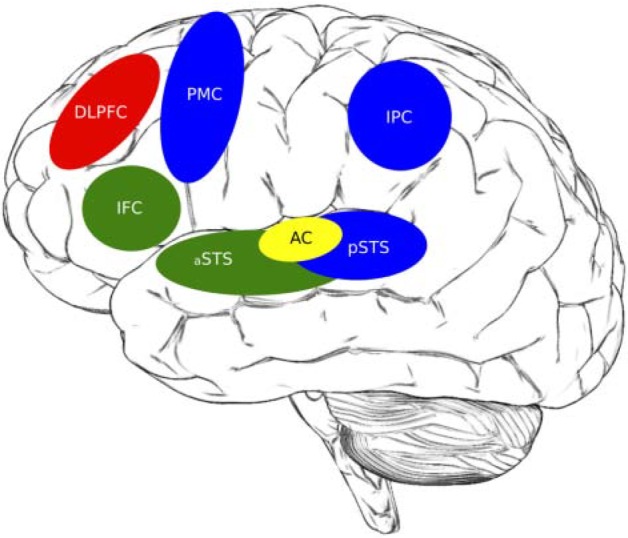Figure 4.

Brain regions involved in speech processing in older age
Note: This schematic highlights in the left hemisphere the cortical regions involved in speech perception. Based on the dual auditory processing scheme of the human brain (Rauschecker & Scott, 2009), antero-ventral (green) and postero-dorsal (blue) auditory streams originate from the primary auditory cortices (yellow), auditory belt/Heschl's gyrus. The postero-dorsal stream interfaces with premotor areas and pivots around inferior parietal cortex. Object information, such as mapping speech onto semantics, is decoded in the antero-ventral stream to inferior frontal cortex (Brodmann's area 44, 45). In the postero-dorsal (red) route, attention- or intention-related changes in the IPL (Brodmann's area 40) influence the selection of context-dependent action programs in prefrontal cortical (PFC) and PMC (Brodmann's area 6) areas. Both routes can be modulated by activity in the dorsolateral prefrontal cortices (red; Brodmann's area 9, 46), although how this occurs remains to be tested. Techniques with high temporal precision (e.g., magnetoencephalography) would allow determination of the order of events in the respective neural systems. AC = auditory cortex; STS = superior temporal sulcus; IFC = inferior frontal cortex, PMC = premotor cortex; IPL = inferior parietal lobule.
